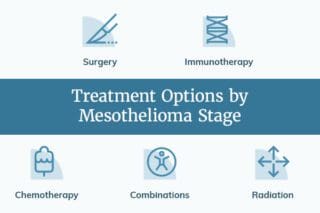
Malignant pleural mesothelioma is an aggressive form of cancer. Even after treatment, the cancer may still progress. Researchers are studying potential therapies for previously treated patients with progressive pleural mesothelioma.
In a recent study, researchers found focal radiation therapy may be an effective option for pleural mesothelioma patients with limited progression. They noted focal radiation extended overall and progression-free survival among study participants.
What Is Focal Radiation?
Focal radiation, also known as focal radiotherapy, is a highly focused form of radiation. Doctors use three-dimensional images to deliver precise, targeted doses of radiation to tumors.
There are different forms of focal radiation, including:
- Stereotactic body radiotherapy (SBRT): Doctors use three-dimensional imagery to accurately target tumors with radiation. SBRT allows doctors to maximize the dose of radiation delivered to the tumor and spare healthy tissue.
- Hypofractionated radiotherapy (Hypo-RT): Doctors administer larger doses of radiation, less frequently. In other words, patients receive a higher dose of radiation per treatment. As a result, the total duration of Hypo-RT is shorter than traditional therapy, lasting days or weeks.
Recently, researchers observed the efficacy of these two forms of focal radiation therapy. They looked specifically at progressive pleural mesothelioma.
How Doctors Used Focal Radiation Therapy to Treat Mesothelioma
From April 2006 to March 2019, 37 patients with oligoprogressive pleural mesothelioma were treated with focal radiation. All of the participants previously underwent treatment and had since experienced mesothelioma progression.
Before the study began, all of the participants had undergone some form of surgery. Each patient underwent one of the following:
- An extrapleural pneumonectomy
- An extended pleurectomy
- A partial pleurectomy/biopsy procedures
Participants also received one or more lines of chemotherapy.
Study participants then received focal radiotherapy in the form of SBRT or Hypo-RT. Researchers were not aiming to compare the two forms. Instead, they were investigating the efficacy of either type of focal radiation.
Focal Radiation Extends Survival for Patients With Progressive Mesothelioma
Researchers found focal radiation to be a safe and effective option for patients with oligoprogressive pleural mesothelioma. The treatment extended overall survival and progression-free survival.
- From the start of focal radiation therapy, researchers found a median overall survival of 26.9 months.
- Researchers found a median progression-free survival of 5.1 months. According to the study authors, existing treatments for oligoprogressive pleural mesothelioma have a progression-free survival of closer to three months.
Researchers also found focal radiation therapy may help delay the need for subsequent treatment. For study participants, focal radiation delayed further systemic therapy by a median of six months.
Patients also did not report any adverse events during treatment.
The study authors noted focal radiation seemed more effective in patients who received it after their first-line therapy, rather than following a second- or third-line treatment. They believed this was due to the patients having fewer and/or smaller tumors and better overall health when the study began.
What’s Next for Focal Radiation as a Mesothelioma Treatment?
This study shows promise for focal radiation as a viable treatment for patients with progressive pleural mesothelioma. Currently, there is no standard treatment option for these patients.
The study authors noted mesothelioma seems to respond better to higher doses of radiation. This means higher doses of radiation may kill mesothelioma cells more effectively than traditional doses. As a result, focal radiation can be a beneficial treatment option for mesothelioma.
The researchers also stated focal radiation is safe. Patients didn’t experience any side effects of severe toxicity. The targeted doses of radiation also allow for a lesser impact on nearby healthy tissue.
Although the study is promising, more research is needed among larger groups of participants. Further research will allow doctors to better understand the therapy’s potential risks and benefits.



